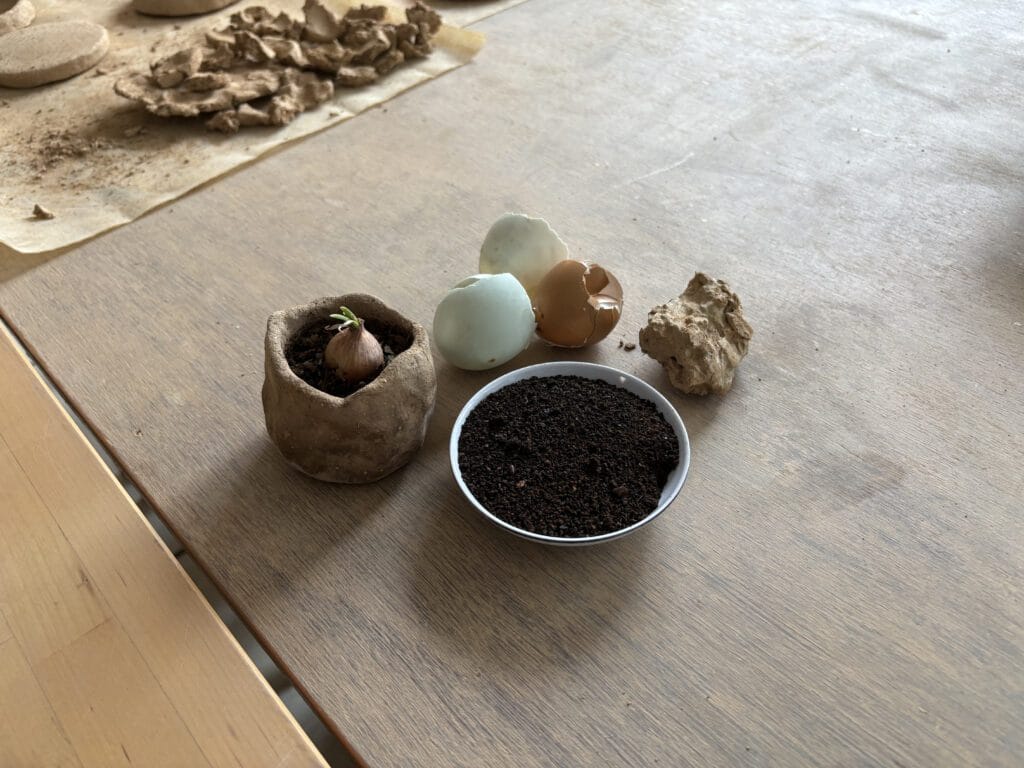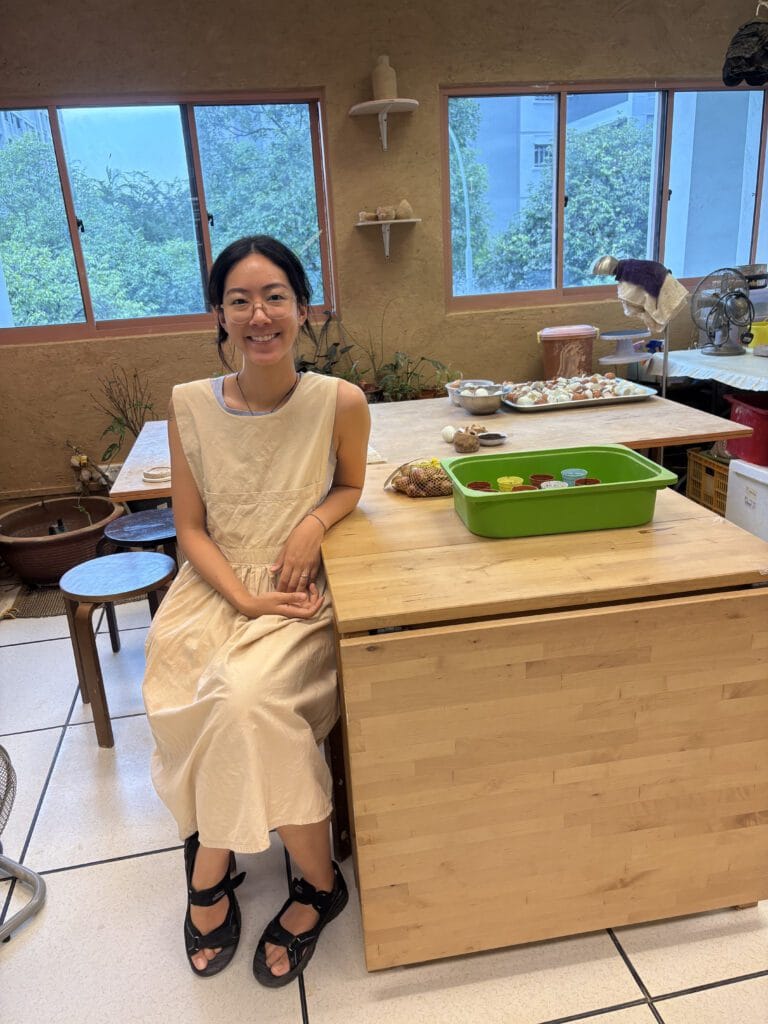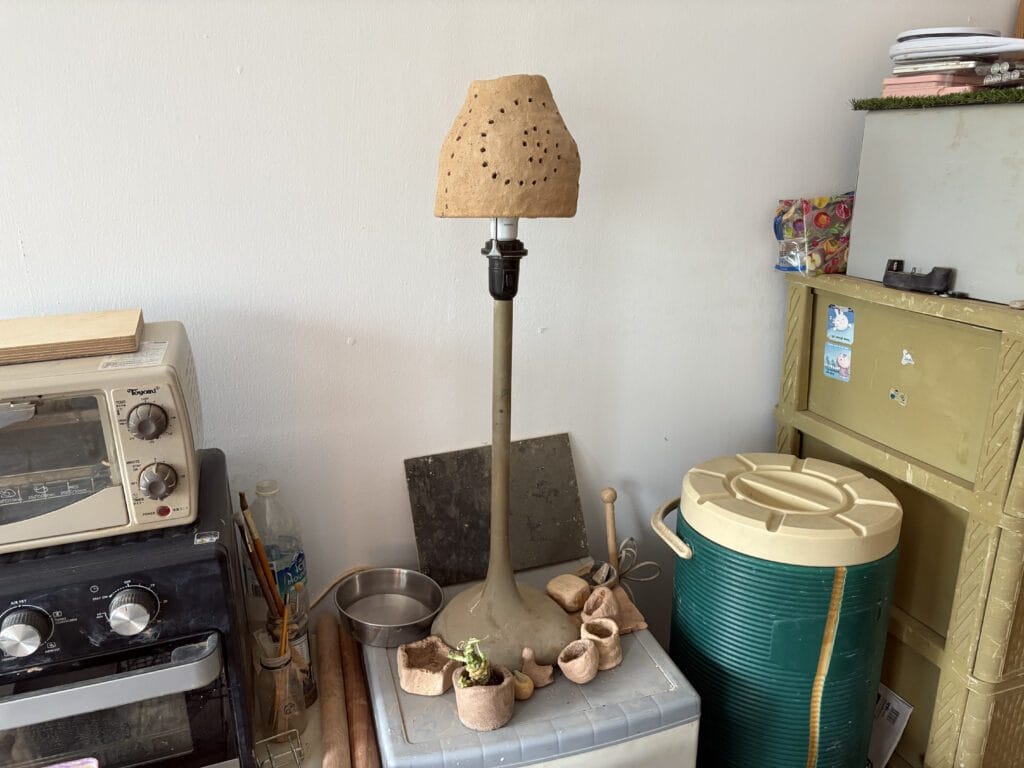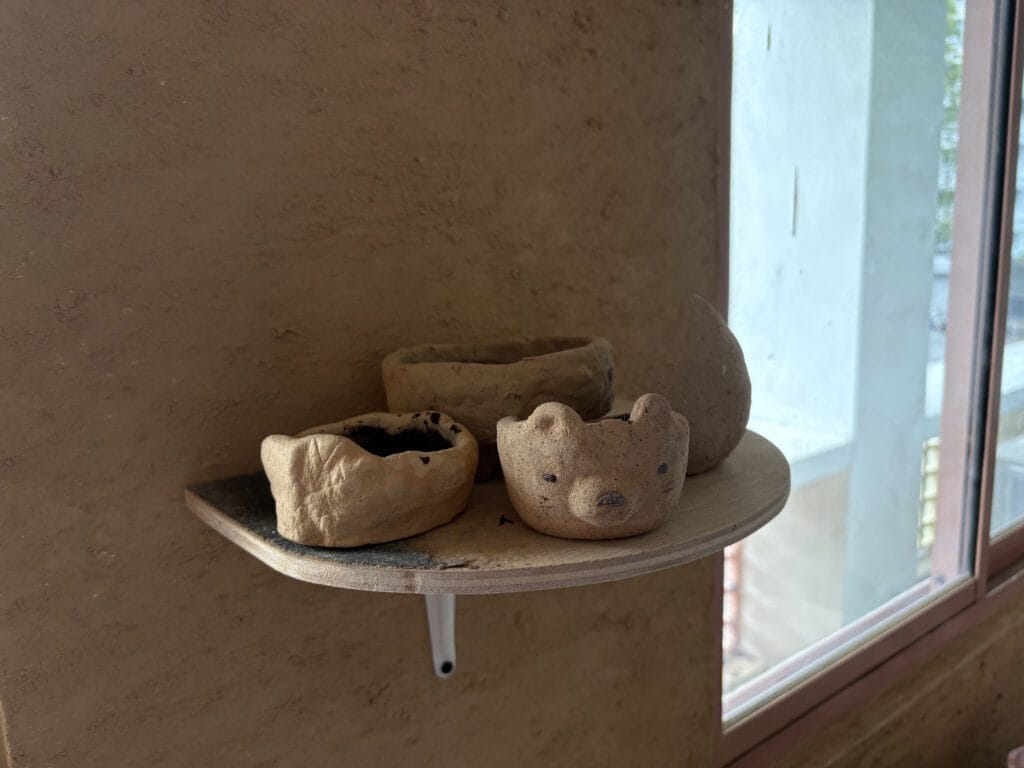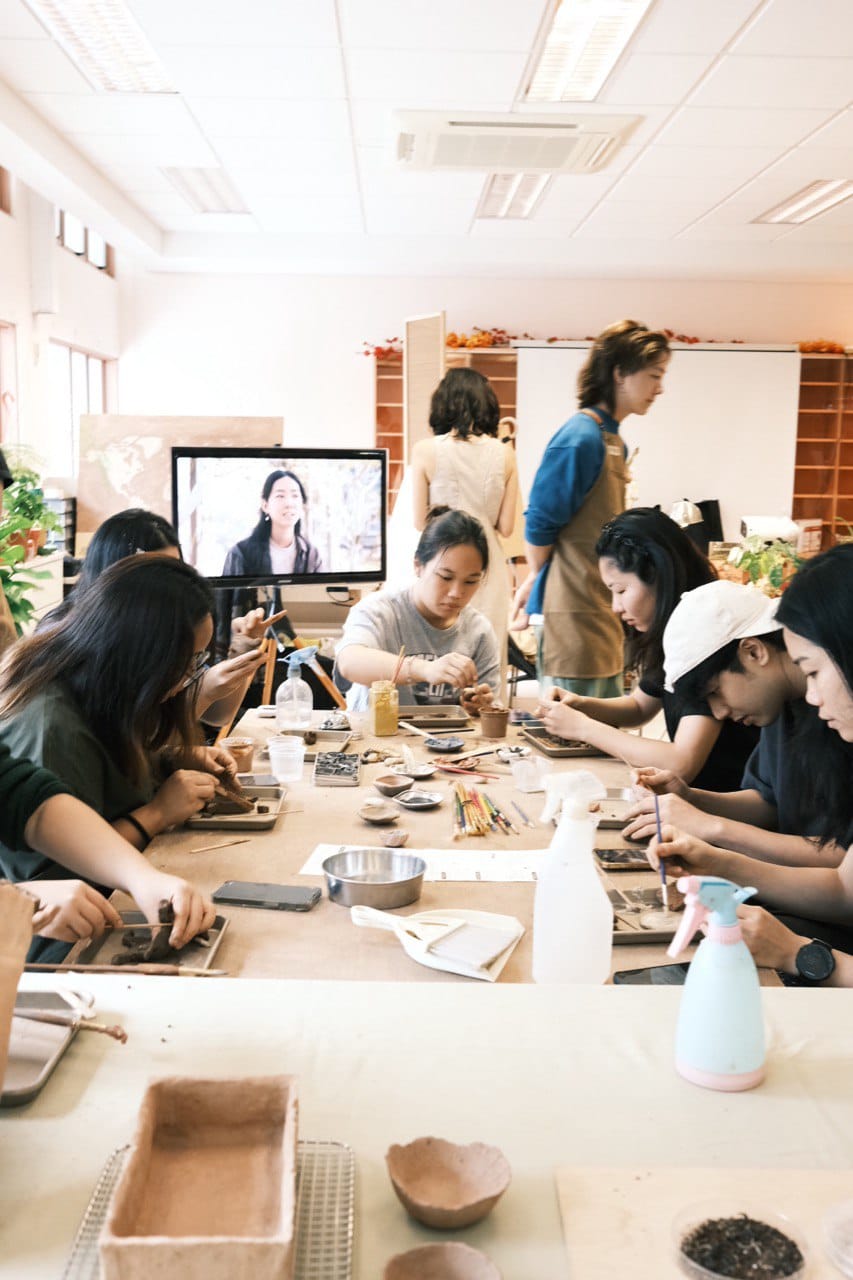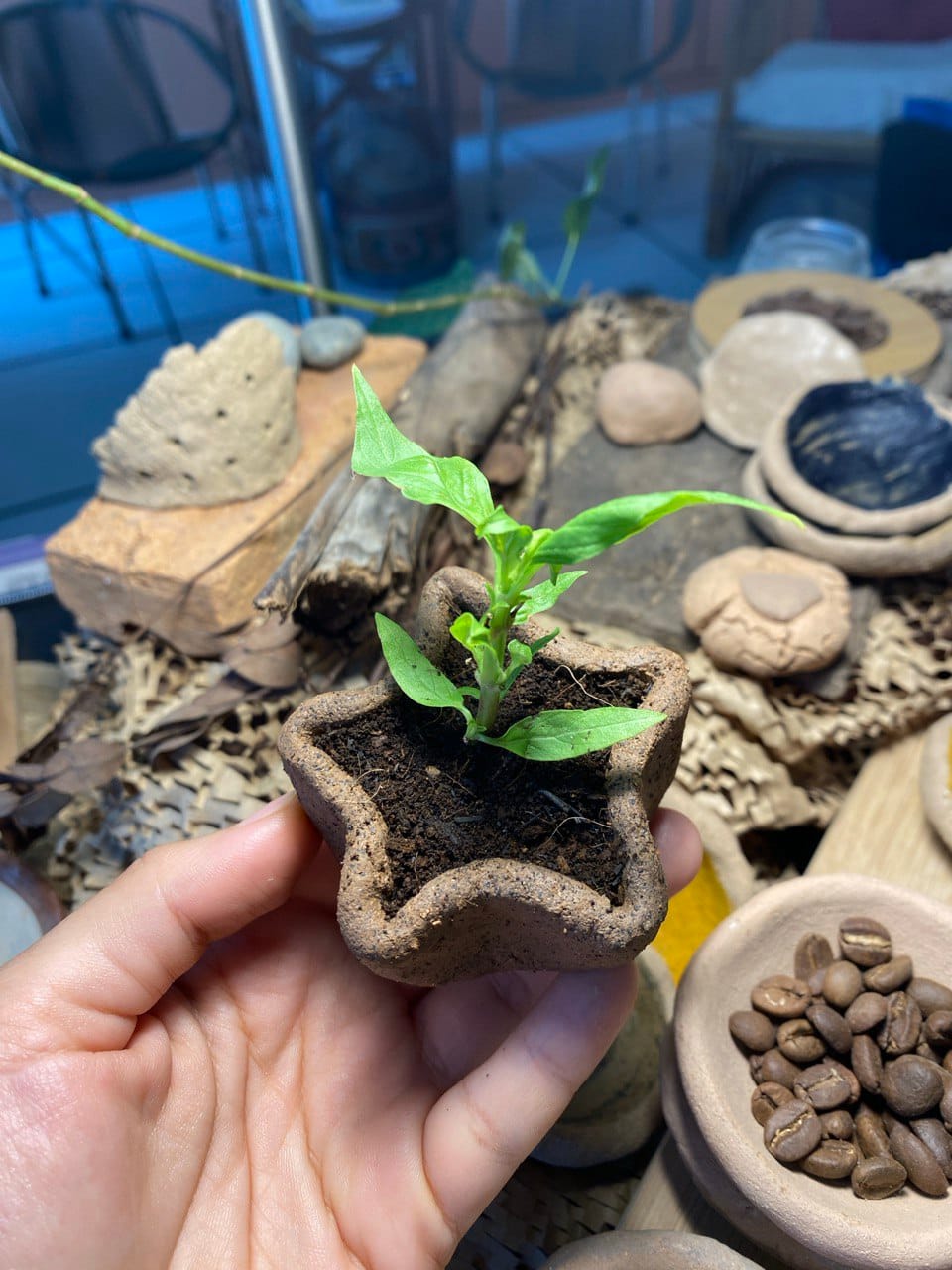Besides reusing food waste from food establishments, Ferticlay also repurposes excavated waste clay from construction sites that would have otherwise been dumped in a landfill.
Every year, construction projects dig up eight to ten million cubic metres of marine clay during tunnelling and foundation work, whose disposal creates a problem in the land-scarce country.
Singapore has been working to reuse excavated materials from construction sites to reclaim and create new land. In these cases, clay waste is used as filler material in making concrete. Could clay then be scaled to replace concrete entirely, like the earthen houses in Chiang Mai?
Jodie believes it is possible.
Ferticlay offers made-on-demand tiles and bricks crafted from the eponymous clay. However, demand so far has been for decorative projects like installations, rather than practical purposes like walls. As earthen products like ferticlay do not follow Singapore building codes, it is difficult to supply these tiles and bricks in bulk and for heavy-duty usage.
Jodie recognises it would be difficult for ferticlay, or clay in general, to be accepted as a building material industrially.
While Singapore’s early shophouses were built with locally produced clay bricks and roof tiles not unlike Ferticlay’s own products, urbanisation has made the country heavily reliant on concrete. Concrete, the most used man-made material in the world, accounts for up to eight per cent of global carbon emissions during production and requires huge amounts of water and sand, resources that are limited in Singapore.
Clay, on the other hand, is an abundant natural resource. Firing clay for bricks and tiles requires substantial energy, but methods like air-drying, which Ferticlay adopts, can significantly reduce carbon emissions. Ferticlay avoids firing their clay up to 90 per cent of the time. In tropical cities like Singapore, clay tiles can also help keep interiors cooler compared to concrete.
Still, concrete beats out clay in many other factors important to construction companies and homeowners. Manufacturing concrete tiles is faster and less labour intensive, making them cheaper and easier to work with for large-scale construction. While both materials are durable, concrete is stronger in bearing heavy loads, which is crucial for Singapore’s high-rise buildings.
According to Jodie, clay buildings also require more maintenance. For these reasons, she thinks most Singaporeans are not ready for building with clay yet.
“I don’t think a lot of people would be willing to put in the effort to maintain it and to be in it for the long haul,” she said. “We’re very used to convenience.”
People might not be comfortable with the risk of clay buildings not lasting heavy rain, she added. “They buy a house, they want it to be safe.”

